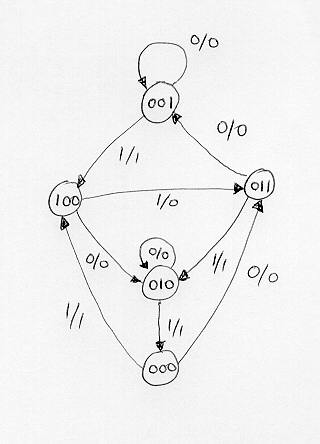
1. Design a BCD-to-decimal decoder using the unused combinations of the BCD code as don't-care conditions.
2. Implement a full-adder with two 4 X 1 multiplexers.
3. Design a combinational circuit that compares two 4-bit numbers A and B to check if they are equal. The circuit has one output X, so that X = 1 if A = B and X = 0 if A is not equal to B.
4. A sequential circuit has three flip-flops, A, B, C; one input, X; and one output, Y. The state diagram is shown below. The circuit is to be designed by treating the unused states as don't-care conditions. The final circuit must be self-correcting.
(a) use D flip-flops for the design (b) use JK flip-flops for the design

5. Design a synchronous BCD counter using JK flip-flops. Determine the next state for each of the six unused states. Is your counter self-correcting or not ?
 EL10B Homepage
EL10B Homepage